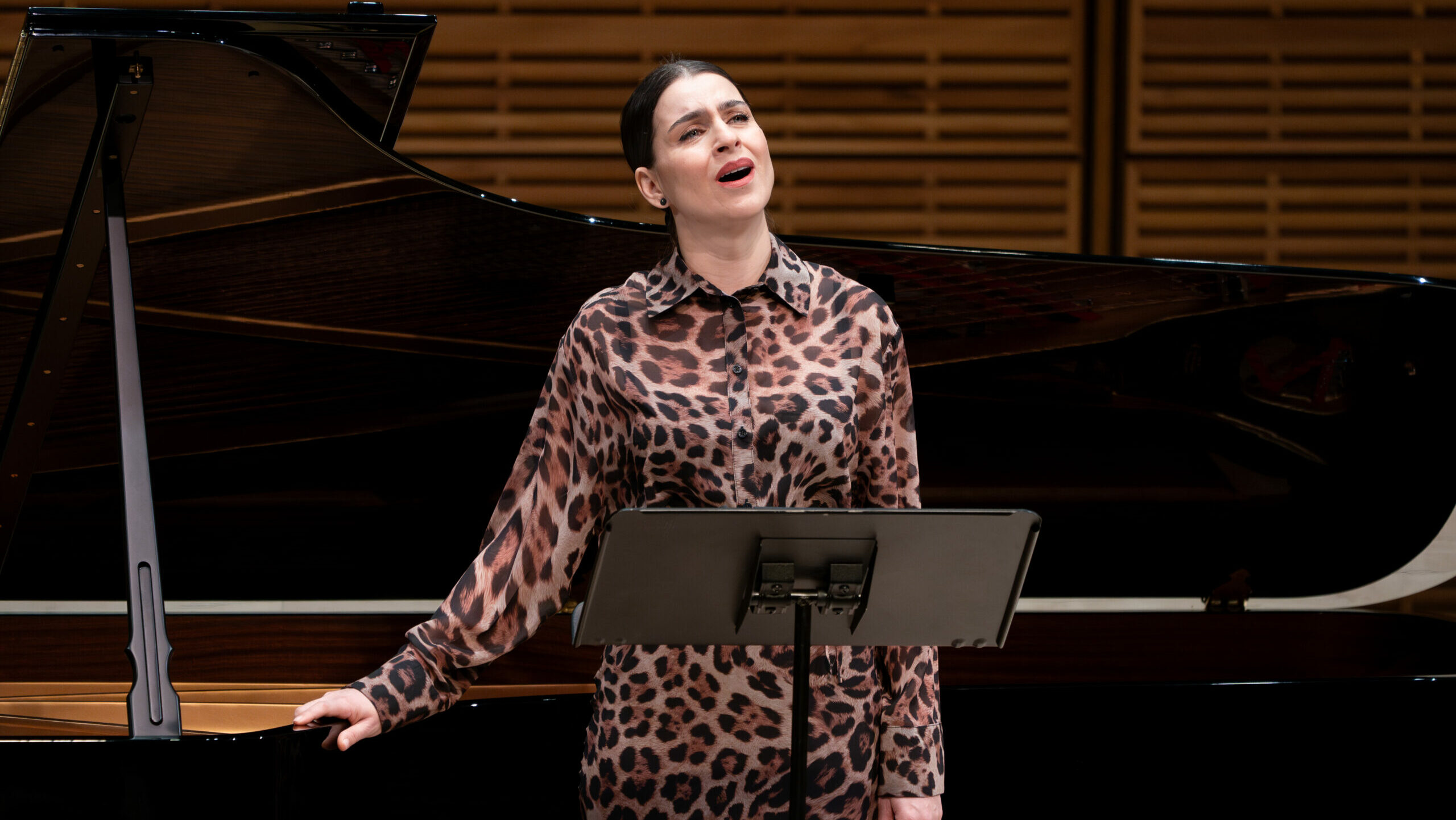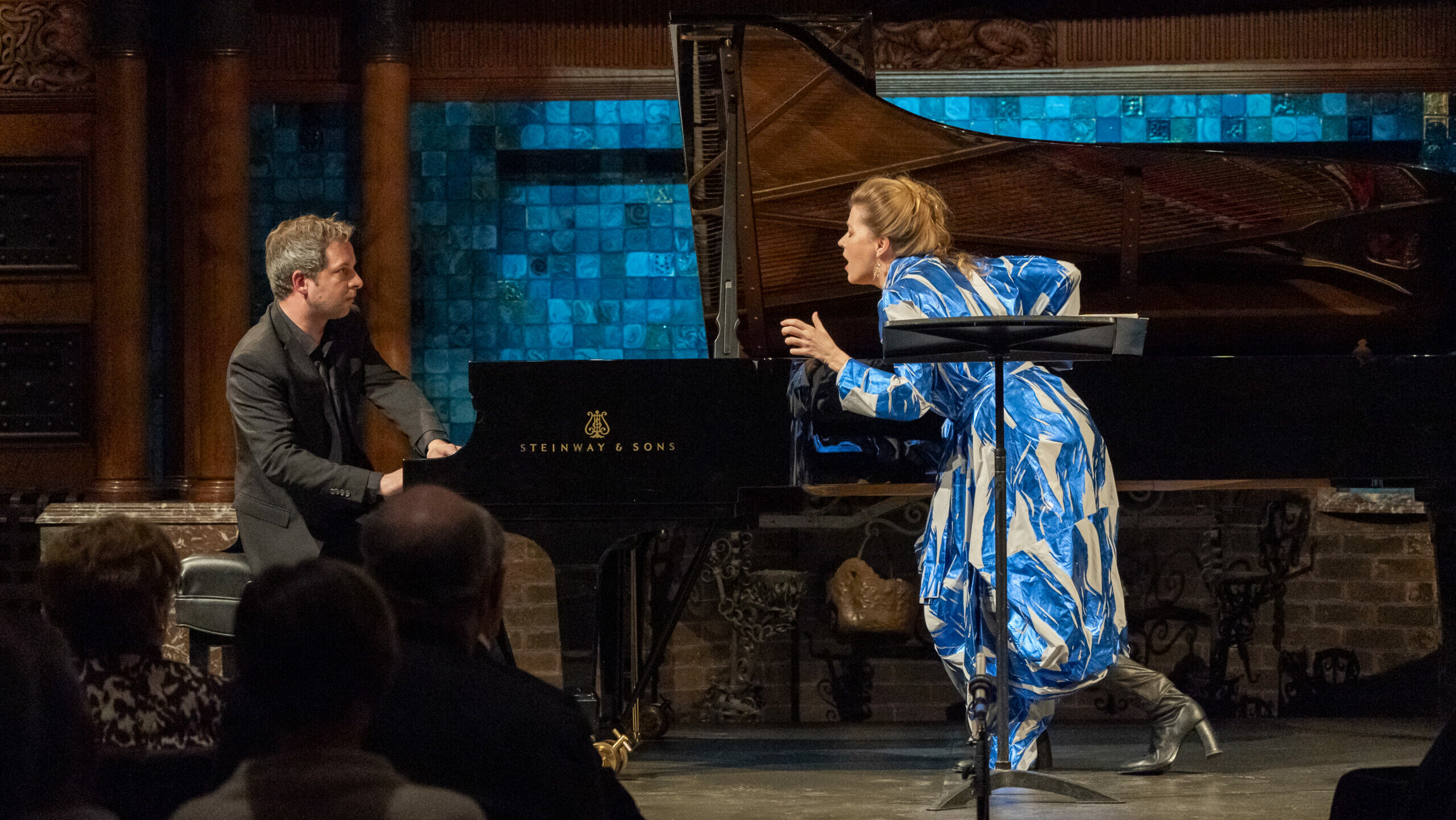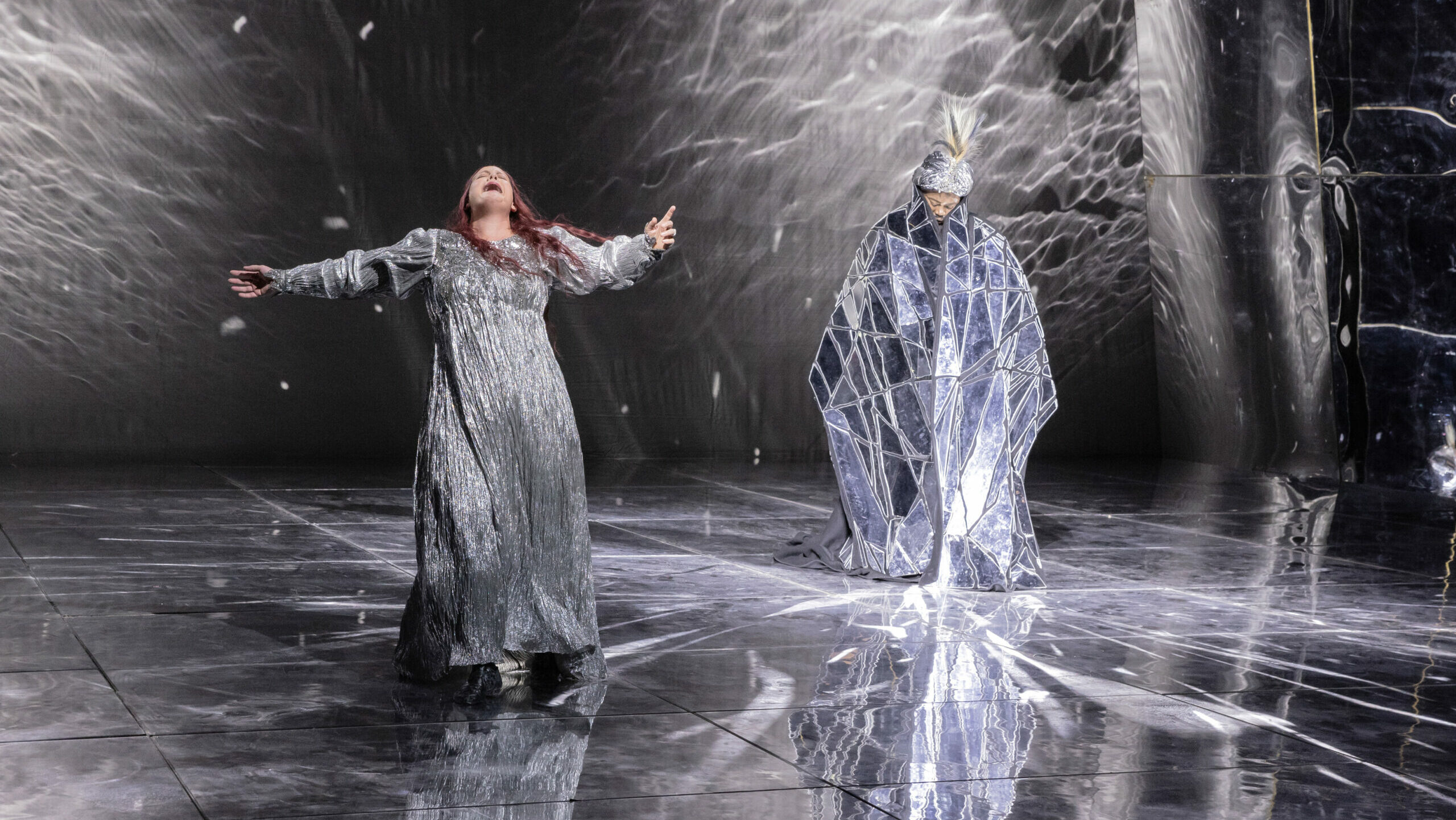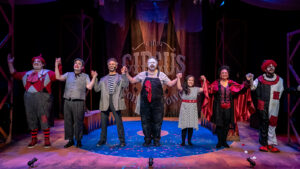

Originally scheduled for their 2020 Season also as a vehicle for Pérez alongside Joseph Calleja as the Prince to be conducted by Santa Fe Opera Music Director Harry Bicket—it was subsequently canceled due to Covid-19 pandemic. At that time, Santa Fe Opera created a digital performance series “Songs from the Santa Fe Opera” to celebrate the opening nights of the originally scheduled operas, and the Rusalka portion—which included discussions with Pérez, Bicket and Pountney along with Pérez’s take on “Song to the Moon” and James Creswell’s Vodník’s Aria—can be found below.
Pérez and Creswell were the only two from the cast that returned for the 2023 production (Michaela Martens was originally announced to return as Ježibaba as well, but eventually replaced by Bryce-Davis).
While Dvorák’s reputation now lies mostly with his orchestral works, particularly From the New World Symphony and his Cello Concerto, Rusalka remains the only one (out of his 10 operas) that is still regularly performed in opera houses around the world, in part thanks to the popularity of the “Song to the Moon” aria from Act 1. I included the fascinating backstory of the opera genesis in my 2019 review of the San Francisco Opera production before. For a summary of the opera plot, be sure to check out the entertaining clip below (and watch out for the funny Renée Fleming bit!)
In his illuminating article and interview published just a day prior the show, Mark Tiarks explored the key to understanding Poutney’s concepts as he said:
For any production team approaching Rusalka, the most basic question is whether to lean into the opera’s fairy tale aspect (Hans Christian Andersen’s The Little Mermaid provided much of the plot) and its nature painting or to explore in human, psychological terms the issues its archetypal characters encounter.
This Rusalka does the latter, underpinned by the fact that Sigmund Freud’s groundbreaking book The Interpretation of Dreams was published in 1899, two years before Rusalka’s premiere, with The Psychopathology of Everyday Life following in 1901.
This fairy tale tackles all kinds of issues about becoming adults,” Pountney says, “and it deals with the emotions and difficulties and cruelties that are sometimes inflicted on people who are in that vulnerable situation, so it’s a kind of rite-of-passage piece.
The fact that Rusalka is trapped somewhere between her own world and the world of the prince is the metaphor for her being trapped between childhood and adulthood. “
Pountney had delved into such theme in his iconic 1983 staging for English National Opera, where he reimagined Rusalka as an adolescent girl in an Edwardian nursery—on the brink of sensual awakening—dreamt of first love.
This time Pountney dialed up the psychological aspect of the interpretation by setting it as (per Santa Fe Opera press materials) “a Freudian fairy tale set in a psychiatric hospital in Vienna,” tapping into both the mythical and physical aspects of the story. Not only the staging served as a cautionary tale of a girl becoming an adult, but it also provided social commentaries on the expectations of the adult/real world—from class, gender, race (or more appropriately, species), all the way to relationship and love. In a way, it found striking parallels to Greta Gerwig’s Barbie that, interestingly, opened the same weekend!
Pountney received great support from his scenic designer Lesley Travers in conceiving his visions, as he said in the interview above “I gave Lesley Travers some hints about what I was thinking, without telling him too much, because then we’d just be steering back to what I’d done before. He took the essence of the story and developed his own response to it, and that, in turn, has provoked me to do some different things.”
Travers realized the “psychiatric hospital” as a series of pristine white cabinets properly placed on all three sides of a tilted stage. The centerpiece of the set (at least for both Act 1 and 2) was a chair-y tree placed on stage left, a structure so striking that Santa Fe Opera proudly used it as promotional picture! Regarding this tree, Pountney said “There’s a tree, but the tree is made of chairs. Like the bureaucratic world of the hospital or school or whatever this is, they’ve been thrown up into the air, producing an abstract sculpture in which Rusalka hides.”
The set gave an aura of clinical and emotionally detached space right from the start, turning into claustrophobic when water was pumped into the set on stage left (the area under the chair-y tree). In Act 1, Pountney cleverly exacerbated the trapped feeling by displaying a tableau of Ježibaba binding Rusalka’s legs during the Overture (She cut the bandages open later when she granted Rusalka her legs), which set the wheels in motion.
Characters came in and out unexpectedly from those cabinets, just like in any fairy tale stories, while stage crews in white hazmat suits moved those cabinets around to ensure nonstop actions. Similar as his 1983 staging, Vodnik came out in a wheelchair, this time wheeled by one of those stage crews. A single tree denoted the meeting place of Rusalka and the Prince.
It was all captivatingly bizarre and otherworldly, highlighted by Malcolm Rippeth’s brilliant lighting that contrasted brightness and shadow in almost equal measure. I only wished Pountney and Travers didn’t overdo the Ježibaba’s potion making scene … as a cat lover, I found the killing of a cat onstage (by breaking the neck) was big no=no!
The staging apexed in Act 2 with the costumes specifically becoming the defining factors (the program listed Marie-Jeanne Lecca as costume designer and Zeb Lalljee as costume realizer) both in the kitchen scene and especially in the Prince’s castle scene. The kitchen scene was designed for maximum laughs as the Gamekeeper and the Kitchen Girl, in outlandish costumes made from kitchen utensils, plucked feathers and chopped meats from multiple fowls.
The party scenes made memorable by the presence of four magnificently display cases (each with its own chandelier) in the middle of the stage; three of them occupied by half-human, half-antelope creatures and the fourth one intended for Rusalka. All four (including Rusalka) dressed in similar cream-colored outfit, while all the party guests were decked in glamorous Victorian garb dancing and networking around the display cases, undoubtedly symbolizing the social status differences.
The arrival of the Foreign Princess on top of a golden horse statue marked the turning point of Act 2, and here it was signified by Rippeth’s bright red lighting that bathed the stage to match the Foreign Princess’ ensemble. She led the guests in mocking and taunting the poor creatures and Rusalka, signaling the cruelty of society towards those who looked different and had no voice. It was truly remarkable to see all the drama unfolded in this act with all those symbolisms and messages!
I always fascinated by how opera directors staged the post-human world of Act 3; most opted with a distorted reenactment of Act 1 staging. In this production, Pountney and Travers decided to go a different route and presented a completely different and chaotic landscape. Gone was the chair-y tree structure, replaced by a jumble mess of tilted display cases in the center of the stage—probably intended to convey the ruin of civilization.
The cabinets, arranged neatly beforehand, now were in disarray and mostly left open. After such a striking set for the first two acts, personally I felt that this act was a bit of a letdown, particularly as the stage became completely static and didn’t move the story as much. Furthermore, the wind was rather strong that night (Crosby Theatre is an open-air theater) such that the doors of those cabinets were at times getting blown by the wind, creating some level of distraction!
Fortunately, the musical aspect of the performance that night was of the highest level. Pérez role debut was a resounding success as she gave a tour de force performance as Rusalka. Clearly at the peak of her musical prowess, Pérez completely disappeared into the role, presented a fully realized characterization of a girl that was determined to be an adult and to be loved no matter the cost.
She deployed a range of colors in her voice to embody the role with the underlying determination and grit throughout. Her Rusalka always knew what she wanted (and indirectly, probably also knew that it wouldn’t end well). Admittingly (in the video above ) the role wasn’t sitting “extremely high” for her voice, it gave her the opportunity to showcase her glorious middle register that noticeably had been developed further in the last couple of years.
The “Song of the Moon” was a perfect example of her personification; Pérez didn’t try to prettify the song, but instead performed it straight with a hint of sadness, almost as if she had premonition that her determination would cost her dearly. The final “God have mercy on you!” was delivered with such heartbreaking urgency that not only she forgave the Prince, but it felt that she also forgave the cruel world that badly mistreated her!
Even more extraordinary was Pérez’ total commitment to the physicality of the role. Pountney tasked the title role with highly challening tasks—including climbing that chair-y tree structure with bound feet while being wet—and Pérez executed them with a plomb, barefooted and clad only in a simple white dress pretty much the whole show.
The “Song of the Moon” was once again the perfect example of this, as (shown above) she rendered the aria with a proficiency of a well-oiled Cirque du Soleil performer, creating a truly edge-of-the-seat moment in more ways than one!
Watson’s Prince had a much easier task at hand, namely looking dashing and roguish much of the opera. Tall, brooding, and handsome, Watson certainly fit the bill as the shallow Prince, and his sonorous sound exemplified the brutish persona of the role, particularly in the first two acts. It wasn’t till the last act that Watson demonstrated his considerable acting chops with a performance full of remorse and regret. Nevertheless, his death scene was another edge-of-the-seat moment as he dunked his face into the pool and stayed there till the lights went out.
Similar to Pérez, Bryce-Davis brought determination and commitment to her Ježibaba portrayal. Clad in a black gown with greyish wig (a homage to Ursula from Disney’s The Little Mermaid, maybe?) and with a dark and gloriously round velvety voice, her Ježibaba strongly suggested a freak of nature, not merely a comic character of the opera. In her hand, Ježibaba wasn’t pure evil also, making the character complex and interesting. Once again, I wished Pountney dialed back her potion making scene, as it felt so unnecessary and in a way it cheapened Bryce-Davis’ excellent characterization.
Speaking of pure evil, in this production that label was assigned to the Foreign Princess, and Williams revealed in the evilness of her dominatrix personification, stealing scenes every time she was on stage. Interestingly, in this production all three female leads demonstrated strong will and determination, a fact that was pointed out by Oliver Prezant in his entertaining Prelude Talk prior to the performance. Williams’ take here made the strongest impression of the role for me among all the productions I’d seen before. Unfortunately, that night her top sounded a little shrill at times, but nevertheless she sang well and moved with confidence and swagger.
Creswell rounded out the principals as Rusalka’s father, the water goblin Vodník. Confined in a wheelchair throughout the opera, Creswell impressively managed to imbue the role with a complete characterization of a (single) parent forced to let go his daughter using his facial expressions and, particularly, a wide range of moods and colors in his booming voice, ranging from worry and sorrow in Act 1 to outbursts to the Gamekeeper and Kitchen Girl in Act 3.
The comprimario roles were all assigned to Santa Fe Apprentice Singers, and they collectively performed efficiently with their vocalism and considerable acting, from Jordan Loyd and Kaylee Nichols’ highly comedic takes on the Gamekeeper and the Kitchen Girl, Ilanah Lobel-Torres, Lydia Grindatto and Meridian Prall’s playful scenes as the Wood Sprites, to Spencer Reichman’s ringing Hunter.
Personally, the star of the show for me was Yankovskya, who led the orchestra with such a lively vigor and power, clearly showing great affinity and respect to Dvorák’s score and musical idioms. In Tiarks’ article above, she said that “The wonderful thing about Rusalka, like many great operas, is that the drama and the music are so woven together. So for me, the most important thing is finding that overall arc of the storytelling, and finding how each individual moment fits into the arc. … He’s very specific about finding slightly different articulations, dynamics, and tempo markings.”
In her hands, the orchestra came alive and the “storytelling” that she mentioned above became extremely evocative, loud and clear. You could almost feel the underlying water element that permeated the score. The trickling of the harp—played beautifully by the Principal Harpist Grace Browning—was especially memorable in its depiction of ocean waves.
In addition, Yankovskya was also very sensitive to her singers, never drowned them even during the loudest climaxes. Little wonder that her website listed herself as a “fiercely committed advocate for Slavic masterpieces”; I personally look forward to other Slavic operatic performances from her!
All in all, it was a wonderful night at the Opera both theoretically and musically, and I applauded Santa Fe Opera for presenting such a beautiful show. There are only four more performances left, and it is certainly worth all the hassle traveling to Santa Fe to catch it!
Photos by Curtis Brown for the Santa Fe Opera?






























Comments